“It wasn’t just that she died, it is that she could have been saved. That’s a very difficult sentence to settle on your bones. As a mother, your job is to protect your child. I know it’s not my fault. I don’t have that guilt. But you always have regret. You live with regret.” This is Milly Tuomey’s mother Fiona, from Templeogue, south Dublin.
The legal journey of Milly concluded this week at the High Court. She died by suicide on January 4th, 2016, aged 11. Unfathomable grief.
Her father Tim says: “Life going on has been a challenge. Fiona and myself would both admit to, after it happening, wanting to lay down and die.” His emotion is still raw. “I’ve asked myself the question, from that perspective of wanting, just to stop. Of course, we’re never going to think, never ... because of Daisy.” Daisy is their daughter; Milly’s sister. “But, as an individual you just want to stop. Now when I ask myself that question, no, I do want to live. And we are making moves to try to do that. We want to bring Milly with us. But we want to live as well. I spent many years, I would say, existing, throwing myself into work. But I do want to live. I want us to be able to talk and think about Milly, without the default being immediate sadness. I want to be able to smile more. It’s better than it was. I can’t say my first instinct is still not to feel just sadness. Because of the waste, and because she’s not with us.”
Her sister Daisy was barely 13 when she found Milly. Initially “you’re in shock. The first year, not only was I really young, but I think my brain went into this protection mode. It shielded me from the trauma. I wouldn’t have been able to handle that at such a young age. Gradually as I got older, little by little, I started processing what actually happened. I started to recognise what I was feeling, try to deal with it to my best ability. It wasn’t easy, and it still isn’t easy. I’m still learning to cope. Learning to deal with different emotions. There’s no right way to do it. Everyone deals with grief, and loss, and pain, differently. I still struggle to fully feel everything, because it’s too much.” She turns to her parents, welling. “This is why I don’t cry. Because I don’t want to upset you.”
On Wednesday in court number one at the Four Courts, their case for wrongful death concluded. It was taken by the Tuomey family on behalf of Milly, against several defendants, including St John of God Community Services (the Lucena Clinic, SJOG), which operates the HSE’s Child and Adolescent Mental Health Services (Camhs) in parts of Dublin and Wicklow, GP Ronan Keogan, art therapist Maeve Toomey, and An Cuan Centre for Psychological Services in Rathgar; following mediation, settlement included a €65,000 award, costs and letters of regret to the family.
Barrister Pearse Sreenan, instructed by solicitor Lyndy Cantillon, outlined a story of missed opportunities and systematic failures after the family sought help for Milly in the eight weeks before her dying by suicide, and expert opinion concluding “individual breaches in duty of care led to a systemic failure in addressing the needs of Milly Tuomey, which very likely, prevented her life from being saved.” The HSE and SJOG admitted they failed to provide treatment to Milly within an acceptable timeframe but it was denied that the girl’s death was caused by negligence on their part. There are five Lucena clinics in Dublin and Wicklow.
Milly was a happy, bubbly, mischievous child. Then she expressed a wish to die, with specific plans and actions regarding methods and date. She kept a suicide notebook, posted on social media, self-harmed, talked openly about it. Fiona took her to the GP on November 10th, 2015. He advised talking therapy, referring her to a private counselling clinic (An Cuan), whose first available appointment was with an art therapist. On December 8th, the GP faxed Lucena an urgent referral. On December 14th, Lucena offered a January 5th appointment in Rathgar, sending the family self-report forms, which were returned on December 22nd.
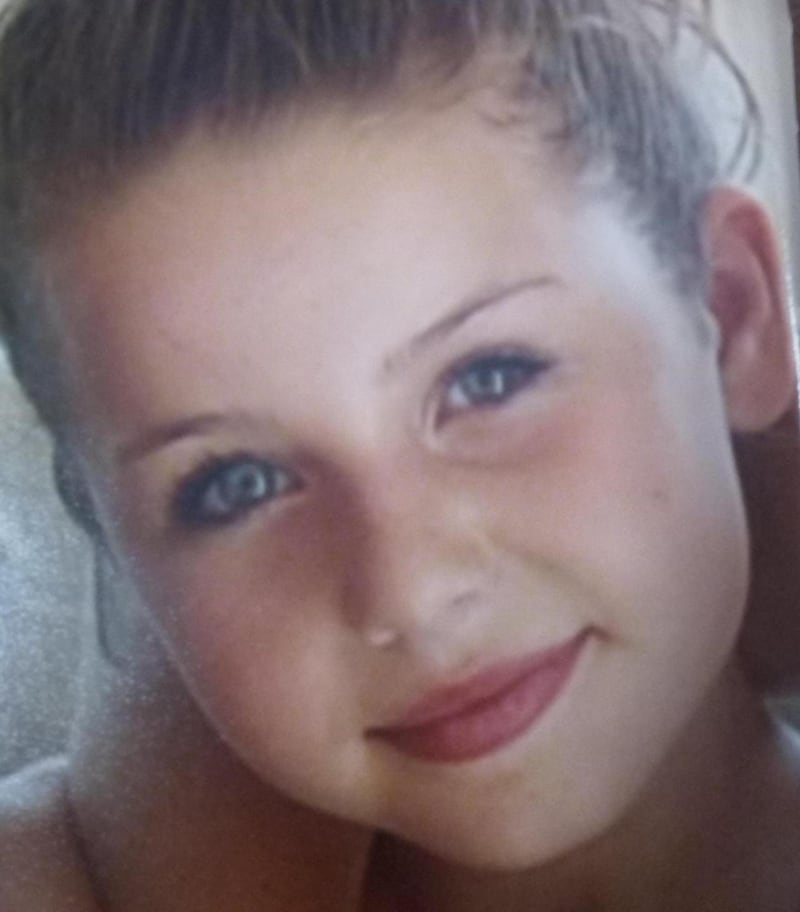
On January 1st, Milly left the room while the family was watching TV together. Her sister Daisy found her shortly afterwards and she was rushed to Crumlin children’s hospital. She was declared dead on January 4th, the day before her Lucena appointment.
The barrister detailed responses lacking in urgency, and with deficiencies in communication. His analogy was of a drowning person, the lifebuoy locked away, while the HSE has keys to unlock therapeutic services. The GP didn’t know where to find the key, the art therapist wasn’t qualified to even look for the key, and the system remained locked. The case against the HSE was that the system is broken. There were multiple missed opportunities, including for the GP picking up the phone to Lucena saying it was an emergency.
[ ‘We’ll never know what Milly had. She was never assessed’Opens in new window ]
Fiona spoke in court. “Milly sparkled.” She was deeply loved, but that did not protect her from a mental health crisis. “Her voice was not heard during her eight weeks, when she struggled to get the correct help in a timely manner. Milly engaged with all the professionals empowered to help her, in person, in writing, in public on social media. And yet she was not heard.” The case would not bring their child back, but was for “justice for Milly and some level of change in the way services are provided to people who may find themselves facing the same struggles”.
Afterwards Fiona asks: “How many times do we hear these words, missed opportunities? But it has catastrophic consequences.”
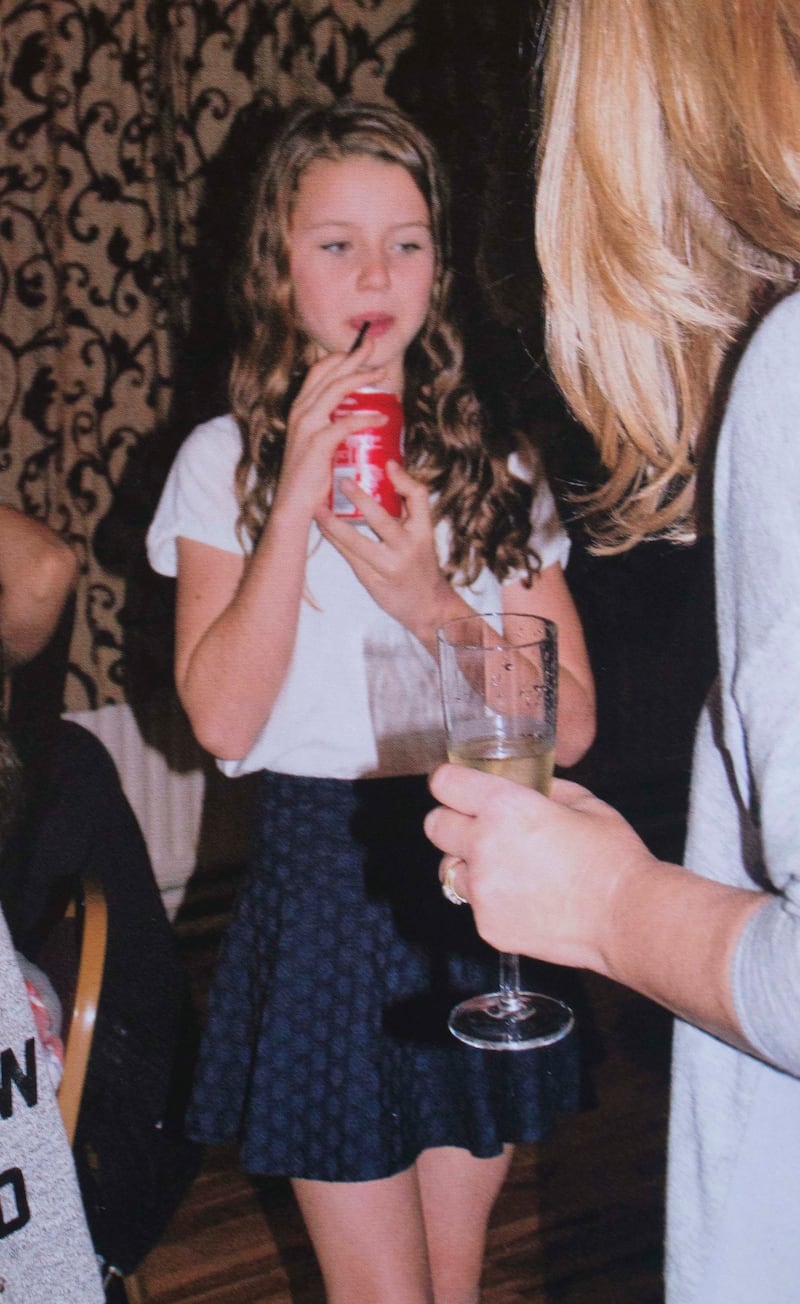
She says: “It is terrifying to people, as it should be, when somebody expresses a desire to die. What do you do with that information? You are told go to your GP, the first gatekeeper to services. If your gatekeeper is not following the procedures and plans laid out, what chance have you got?” She’s critical too of out-of-date systems, the lack of electronic notes for sharing information. SJOG’s letter to them mentions new hubs at Camhs, but they’re a couple of pilots, and “we know the problems still exist with access and waiting lists and funding and staffing. The routes into services are the exact same.”
After court, we sit together in an office borrowed by a friend. This family has been through unimaginable grief over the past eight years, but they are also lovely, warm, normal people. They are articulate, reflective, emotionally open. They’re still dealing with pain. “It’s a lifelong journey. There’s no neat bows on any of this,” says Tim. “It hurts a lot when people avoid mentioning your daughter, as if she didn’t exist. Sometimes they don’t want to upset you. But how could anything someone ever says to us upset us more than what we’ve gone through? At this point, you actually want to keep her alive. I like to hear Fiona and Daisy talking, and Milly comes up, something I haven’t heard before. Today was important, to hear her name again. But the stigma. I think it dictates how people react, how institutions react.”
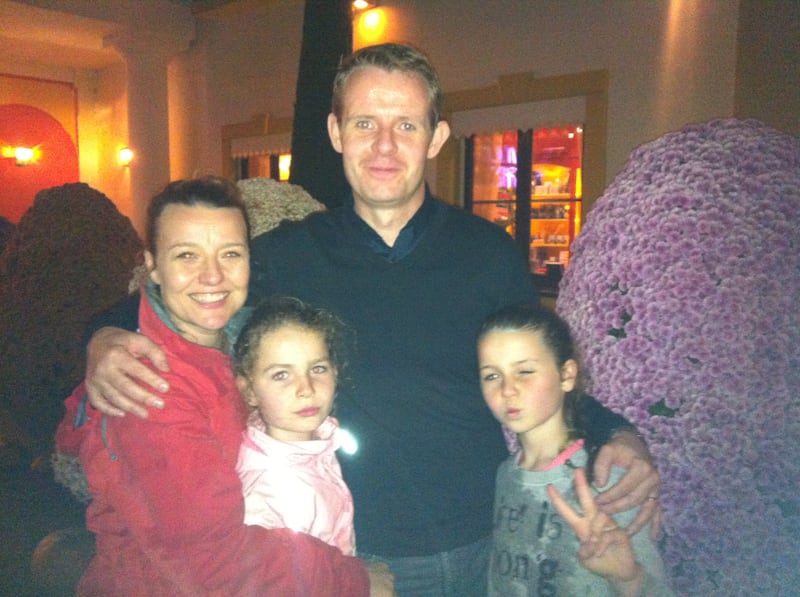
Those memories. That stigma. They recall family fun, and the sisters’ childhood in Switzerland (where their father was working) before returning to Ireland. Skating, tennis. Getting into bed together most nights, to share their days, console, give each other advice, “thick as thieves”, 16 months between them. On holidays in Mayo, wrapped up in sea-fun as their father trailed them along the beach. Milly organising a game with other children on holiday, through German, making herself understood. Sisters jumping into a lake in their clothes and clambering on to one scooter. “We had such a great childhood. I’m gonna definitely honour that with my art in the future, maybe make a film about it.”
Now 21, Daisy is studying at the National Film School at IADT. “I don’t feel her as much here. When I go back to Switzerland to visit childhood friends, I definitely feel her presence, surrounded by memories.”
I live with Milly, she’s as much a part of my life as she was when she was alive. I can never be separate from her
Milly spoke English, German, Swiss-German. She was confident, a strong character; though when the crux came, says Tim, “maybe the arm would ... push Daisy forward instead”. Early on, “the silence in the house was one of the hardest things. We went from a noisy house where, honestly, they never stopped. And suddenly, it was quiet. And it never went back again.”
Fiona adds: “The devastation that suicide leaves behind. Anybody who loses a child is naturally devastated, and their lives can never be the same. But when it’s by suicide, there are additional layers of pain that people don’t even think about. It’s self-stigma. It’s stigma from other people, fear from other people, people asking inappropriate questions, perhaps not being cruel or unkind, but trying to insulate themselves, against it possibly happening to them.” She recalls, still horrified, someone asking “was I tough on Milly, about homework?”
“It’s unnatural. It’s a terrifying thought that somebody so young would die by suicide”, so people “try to tease out, what’s the reason? There must be something, perhaps you did that contributed towards this. Destigmatising is one of the reasons I set up Hugg.” She’s founder and chief executive of Hugg (Healing Untold Grief Groups) suicide bereavement charity. “Because there’s enough pain after a suicide. It’s public education.”
She recalls at a remembrance service at the children’s hospital being introduced to a family who had lost their little girl to cancer. They talked about their child to Fiona, then asked about hers. “She died by suicide. There was the intake of breath. And that was it. They didn’t ask one thing about Milly and they walked away. Because people don’t know what to say next. For some people, you’re not afforded the same sympathies and condolences. People are judged by how they died, not how they lived. It’s an additional burden you don’t get with other death.”
“In the early days, I can’t say I really coped. I had to go back, I was working for myself,” says Tim, a consultant in sports broadcasting. “In three weeks I was back on a plane, sitting in a daze, which continued for two or three years. That phrase, ‘I don’t know how you do it, how you’re so strong’. What is my alternative? It’s nothing to do with being strong.”
Fiona says: “You have no choice. Bills have to be paid. There are no financial supports for people impacted by suicide.” For her: “I needed to meet other people bereaved by suicide. I needed to see them alive, proof of life.” Peer support for the specific experience of suicide bereavement later led to Hugg.
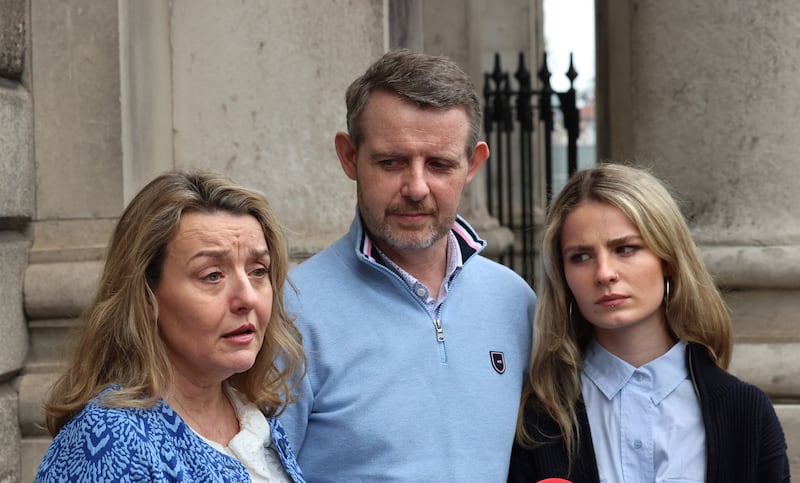
“I didn’t get any sympathy when I went back to school. No therapists. No teachers asked if I was okay. Not even my friends said anything.” Daisy is distressed. “They were told, I think, ‘don’t say anything that would upset Daisy’. So they took that as not saying anything. Because I felt I wasn’t allowed to speak about it, I didn’t allow myself to fully process it. Because no one else was acknowledging the pain I was experiencing. I was just kind of confused, how to deal with that. When people are ignoring your pain, not giving you sympathy, you don’t feel you’re able to talk about it. I couldn’t talk about my sister. That was one thing I think was different: if she died by cancer or something ... It’s like you can’t talk about it. That was one upsetting thing I’m a little bit mad about, at the school. The kids didn’t mean it. They just were young, and they were told not to say anything that would upset me. So they just didn’t say anything.”
Tim observes no politician has ever responded with sympathy. “I firmly believe it’s because of stigma, and because: stay away from that. If politicians are doing that, and schools are doing that ... we’re not trying to understand it, we’re trying to brush under the carpet. We’re not as evolved as we think we are when it comes to stigma around suicide. People think there has to be a very definite reason for this to have happened to you. That’s not the case. That actually doesn’t even make sense. It’s internal, it’s in our brains, and how we process things that can lead to depression. It can’t just be because of external circumstances.”
[ My 11-year-old daughter died by suicide. Now I want to help othersOpens in new window ]
Family and friends were in court, for support. Milly’s death affected a large circle. Fiona dismisses the phrase “ripple effects” about suicide. “They’re not ripple effects. They are seismic shocks. Fissures. Canyons of grief are opened up. But – there is hope. It does change. I live with Milly, she’s as much a part of my life as she was when she was alive. I can never be separate from her. Ever. I miss her deeply. I will always miss her, how can I not? I miss her for all that she should be doing, all that she should be living, all the milestones, that her other little friends reach. I miss her for the things she should be doing with her sister. All those things, they’re gone forever.”
For them all, the best way to go forward was to “try to bring justice in her name, for her, which I think we achieved today to the best of our ability, and thanks to our legal team. And through how we live, and how we bring her name forward in all we do as her family. Then, for me through Hugg and constant advocacy for better mental health services, which deserve parity of esteem with physical health.”
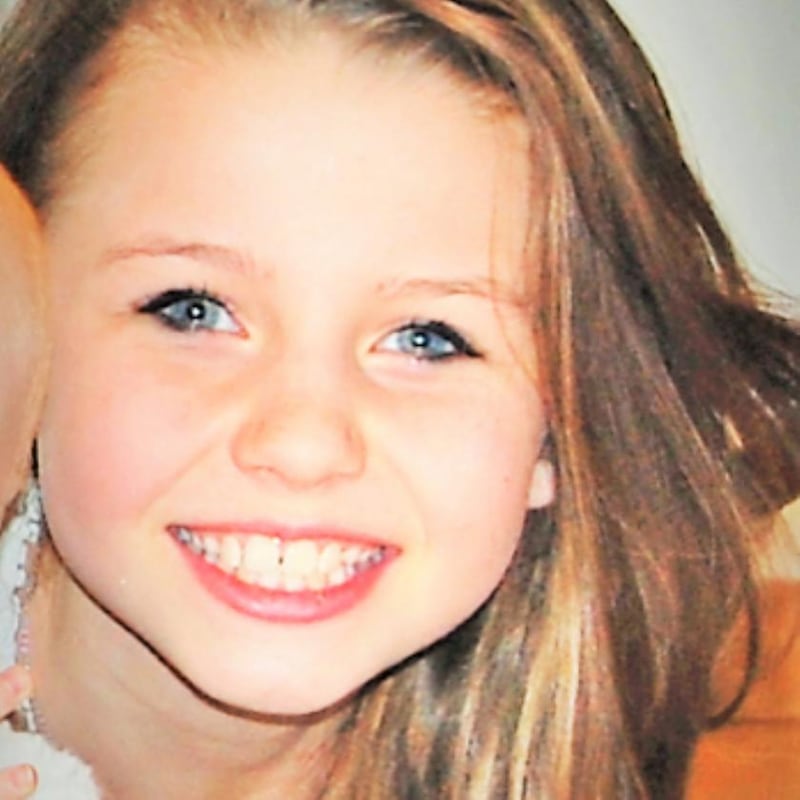
“It was very important to us,” says Fiona, to highlight system failings “because so few people have the ability to do so. We nearly felt duty-bound. We know of many parents who have lost children to suicide, would have liked to have brought cases. But it’s quite narrow, what you can pursue in the courts. The reasons someone dies by suicide are very complicated. Not everybody has had an injury, the mental illness model. But when a child dies by suicide, and you know they were struggling, people have to be held to account.”
“Milly was 11,” says Tim. “I guess they just didn’t take her seriously, because what 11-year-old is thinking about ending their life?” But it does happen, and to younger children. “We’re hoping there’s more awareness to help other people in a situation like this. There’s no full stop, because this is part of our lives. It always will be. I’d say we’ll go through various emotions in the next few days. Disappointment, optimism, maybe be pretty down about things. It’s what happens next that’s important.” The Lucena letter read in court referenced changes to its procedures, which the family is pleased about. “Fine on paper, but there were standard operating procedures eight years ago, which were let down by not being followed, and not sufficiently resourced.”
I don’t think there’s a day goes by I don’t cry for at least five seconds
For Fiona, “the only material difference for us is that Milly’s voice was heard and it was acknowledged publicly that she was let down by a number of people, through failings on their part in doing what they are paid to do. This wasn’t a case where we didn’t know Milly was struggling. Everybody knew Milly was struggling. It didn’t happen overnight, it happened over an eight-week period. If somebody arrived in A&E, bleeding from a wound, and you left them sitting on a chair for eight weeks, there’d be hell to pay. It’s no different for mental health. Just because it’s invisible, no less care should be given to it.”
Reading the case documents, the disjuncture between public and private provision jumps out. Fiona agrees. “The GP dissuaded us from Camhs in the first instance and said ‘send her to talking therapy’. He goes, there’s no point in primary care for a psychological assessment. It was a 1½-year waiting list at the time. It’s no better now. So you go private. We had the wherewithal. But where do we go? We were desperate.” Tim remembers ringing the practice. “They didn’t ask us any questions, didn’t suggest an assessment. It was just the next available appointment, art therapy. The mistake we made, I guess, is trusting the services knew what they were doing and would offer the right supports.”
Fiona points out a problem with suicide statistics, compiled by CSO with data from coroners’ courts, whose legal standard of proof is “beyond reasonable doubt”. Many suicides are not ruled as suicide, instead having a narrative verdict or an open verdict. For example, suicide by drowning may not be witnessed. “The burden of proof is too high” here; in the UK, suicide verdicts are “in all probability”, and Fiona would like to see that in the Irish judicial system too, “because it does a disservice to the many people who may have died by suicide”. It impacts services and support, including for those bereaved and impacted by suicide. “It an additional burden.”
The true suicide figures are thought to be 25 per cent higher than officially recorded, according to the HSE’s National Office for Suicide Prevention (NOSP). “The State should be revisiting the burden of proof to take realities into account.”
[ Suicide most common cause of death among people aged 15 to 34Opens in new window ]
Daisy spent her teenage years without Milly. “We celebrated my 13th birthday together. She saw me as a teenager. Not as an adult.” Court for her was “strange how seven years can just be like, combined into 25 minutes. I’m a little upset about that.”
Tim says: “I don’t think there’s a day goes by I don’t cry for at least five seconds. You know, catch yourself. Not sitting down and floods of tears. It can be just a thought comes into your head and it literally comes out, quickly. And you don’t push it down, but you just go on, continue with your day.”
Milly would turn 21 next year. Landmarks are difficult. Fiona feels a sadness for her friends, peers. She recalls a friend of Milly’s who did his best to support her. “He was only a child, a child supporting another child in distress. That’s a lifelong burden he’s left with, to have to process. These are fissures left for everybody to deal with. You don’t move on, you move forward.”
And they are moving forward. The Tuomeys moved out of their old house in January, “closing the door on a house filled with joy and sadness” and are renovating an old house with a large garden, where they will have a “Milly meadow”. This is a vote for the future, for “joy and laughter and love”, an important “step towards the next phase of our lives together” says Fiona; for “calm and peace” says Tim, adding “it’s more than just a house. It’s about us trying to be optimistic. We are optimistic, we do want to live, and life is tough a lot of the time.”
Fiona says “we bring the best of our memories with us from there, and leave the rest behind”. She’s learned part of suicide prevention is for people left behind to understand “you can survive, you can move forward. Because certainly in the early days, you don’t believe that is possible. The pain is too much. But it is possible and there is hope. People need the right supports, and they need to know what’s available to them. And it needs to be available to everybody. The services are not there, for people to access when they need them.”
She says, “nobody is immune to what may happen to them, a family member, friend or colleague. It is not about your resources and your connectivity and your levels of love and compassion. It’s just part of life. Things happen.”
- If you are affected by any of the issues in this story, you can contact The Samaritans on freephone 116 123
- Hugg can be reached at www.hugg.ie and 3ts at www.3ts.ie












